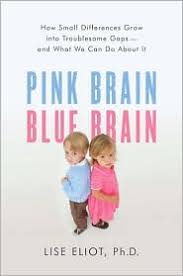Welcome to my first column exploring gender stereotypes and realities in children’s lives. Whether or not you’re a parent yourself, it’s impossible to miss the countless ways in which our culture divides kids along gender lines. Just walk into any toy store and notice how the playthings are segregated–with action figures, race cars, and dinosaurs for the boys, and Barbies, Bratz dolls, and craft kits for the girls.
For decades, debates have raged over the “nature vs. nurture†question: Are we neurologically “hard wired†to behave in stereotypically masculine or feminine ways—or is gendered behavior acquired through culture and socialization? The pendulum has swung back and forth over the past fifty years, with scientists, educators, and parents vacillating between two poles of thought. During the 1970s, second-wave feminists came down on the “nurture†side of the fence, and worked hard to raise a generation of kids free from the restrictive gender roles that permeated the postwar, Leave-it-to-Beaver era. (Think Free to Be, You and Me, Title IX, and the ubiquitous parenting refrain: “you can be ANYTHING you want to be…â€) Recently, however, some experts have been touting the “nature†side of the equation, arguing that boys and girls are “biologically programmed†to behave and learn differently.
Today, in my opinion, the most sophisticated and sensible answer to the “nature vs. nurture†question is: “both.†In her new book Pink Brain, Blue Brain: How Small Differences Grow into Troublesome Gaps—And What We can Do About It,†neuroscientist and mother-of-three Lise Eliot explains that there are some real inborn differences between the sexes, but statistically, they are very small. It’s our culture—what we do and say at home and at school, on t.v. and in the toy store—that amplifies those small innate differences, turning them into self-fulfilling prophesies that limit the aspirations, experiences, and skills of boys and girls alike.
It’s not simply a matter of banning Barbies or forcing boys to do needlepoint. The issues swirling around kids and gender identity are complicated, so simplistic, one-size-fits-all “solutions†won’t do the trick. But in the best feminist tradition, it’s worth asking tough questions about the messages our culture sends out to parents and kids on a daily basis. Why, for example, does the Toy Industry Association persist in having categories like “Best Boy Toy†and “Best Girl Toy†of the year? (More on that next month!) Retail stores gain when they sell pink drapes for girls’ bedrooms and blue shades for boys’—but what do kids lose when they grow up in such a gender-bifurcated world?
Please share your thoughts, opinions and questions by posting a comment or emailing me at rotscant@yahoo.com.



Comments
Caren — October 6, 2009
What great insight into an age-old discussion of culture and nature and their influences on gender specific choices. I, for one, always exposed my daughters to blocks, legos and trucks, and my son to arts and crafts and dolls. Where they drifted during playtime was their choice, and I made sure that they had one to make.
Adena — October 7, 2009
I would never have believed it until I saw it with my own eyes and experienced it in my own life, but my son, at age 2, was attracted to construction equipment, then trains, then firetrucks, etc. etc. It really _was_ nature, not nurture.
gwp_admin — October 7, 2009
I'm sooo eager to watch how gender differences unfold--and/or don't?--in the boy and girl twins I'm carrying around in utero at the moment. Looking forward to reading more BEYOND PINK AND BLUE posts about it all, for sure!!
PS. My liberated 1970s-style parents gave me trucks *and* dolls and I went for the dolls. Anyone else?
SCIENCE GRRL: The Science of Pink & Blue | Girl with Pen — November 12, 2009
[...] Fellow GWPenner Lori mentioned Lise Eliot’s recent book Pink Brain, Blue Brain last month. In my reading of the book, I found Eliot’s balance between nature versus nurture commendable. Despite being a science grrl, I do find myself wanting nurture to win out since then it would be just darn easier to toss out the pink and blue crap. [...]
SCIENCE GRRL: The Science of Pink & Blue | Girl with Pen — November 12, 2009
[...] Fellow GWPenner Lori mentioned Lise Eliot’s recent book Pink Brain, Blue Brain last month. In my reading of the book, I found Eliot’s balance between nature versus nurture commendable. Despite being a science grrl, I do find myself wanting nurture to win out since then it would be just darn easier to toss out the pink and blue crap. [...]
SCIENCE GRRL: The Science of Pink & Blue | Girl with Pen — November 12, 2009
[...] Fellow GWPenner Lori mentioned Lise Eliot’s recent book Pink Brain, Blue Brain last month. In my reading of the book, I found Eliot’s balance between nature versus nurture commendable. Despite being a science grrl, I do find myself wanting nurture to win out since then it would be just darn easier to toss out the pink and blue crap. [...]